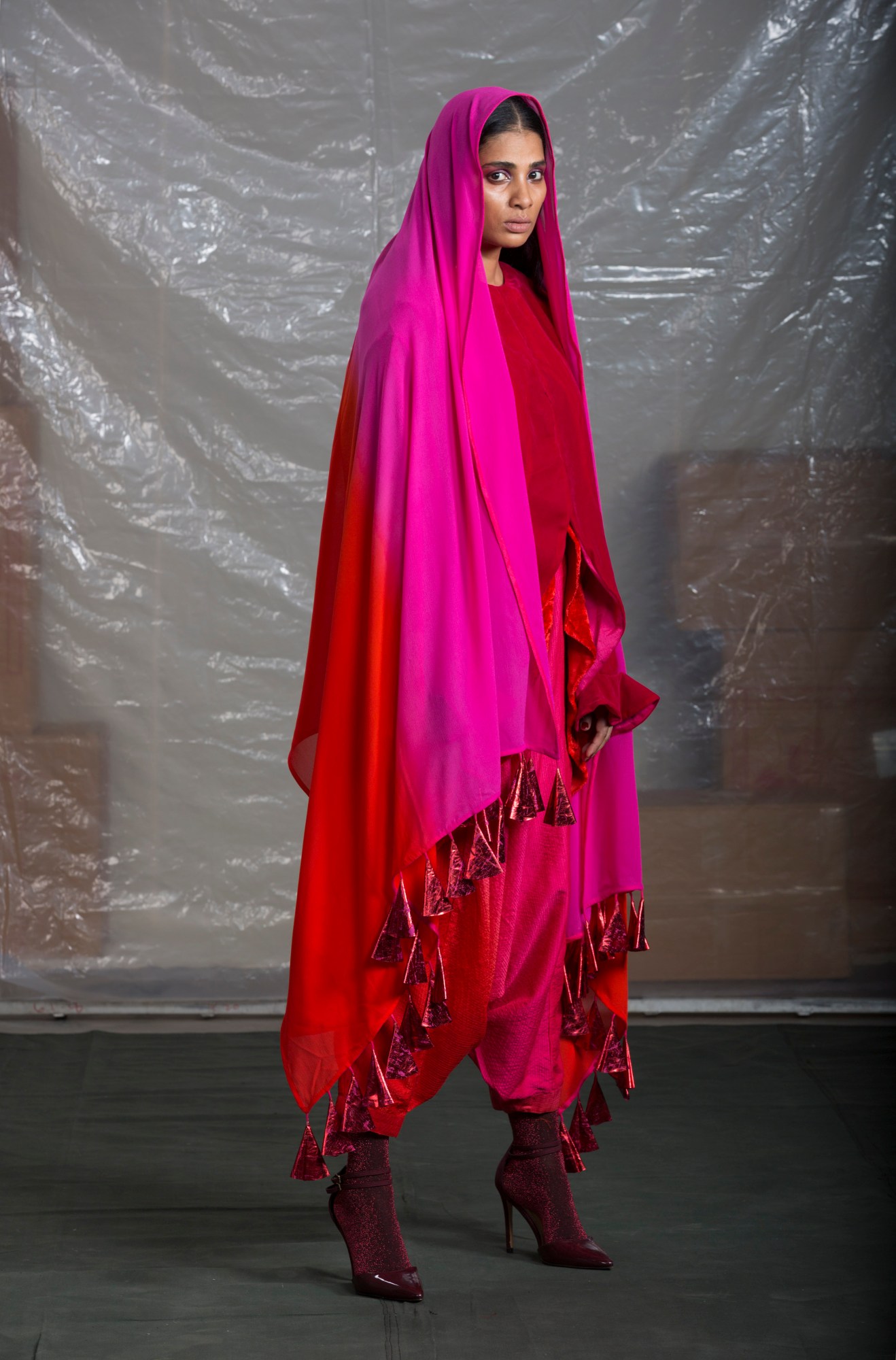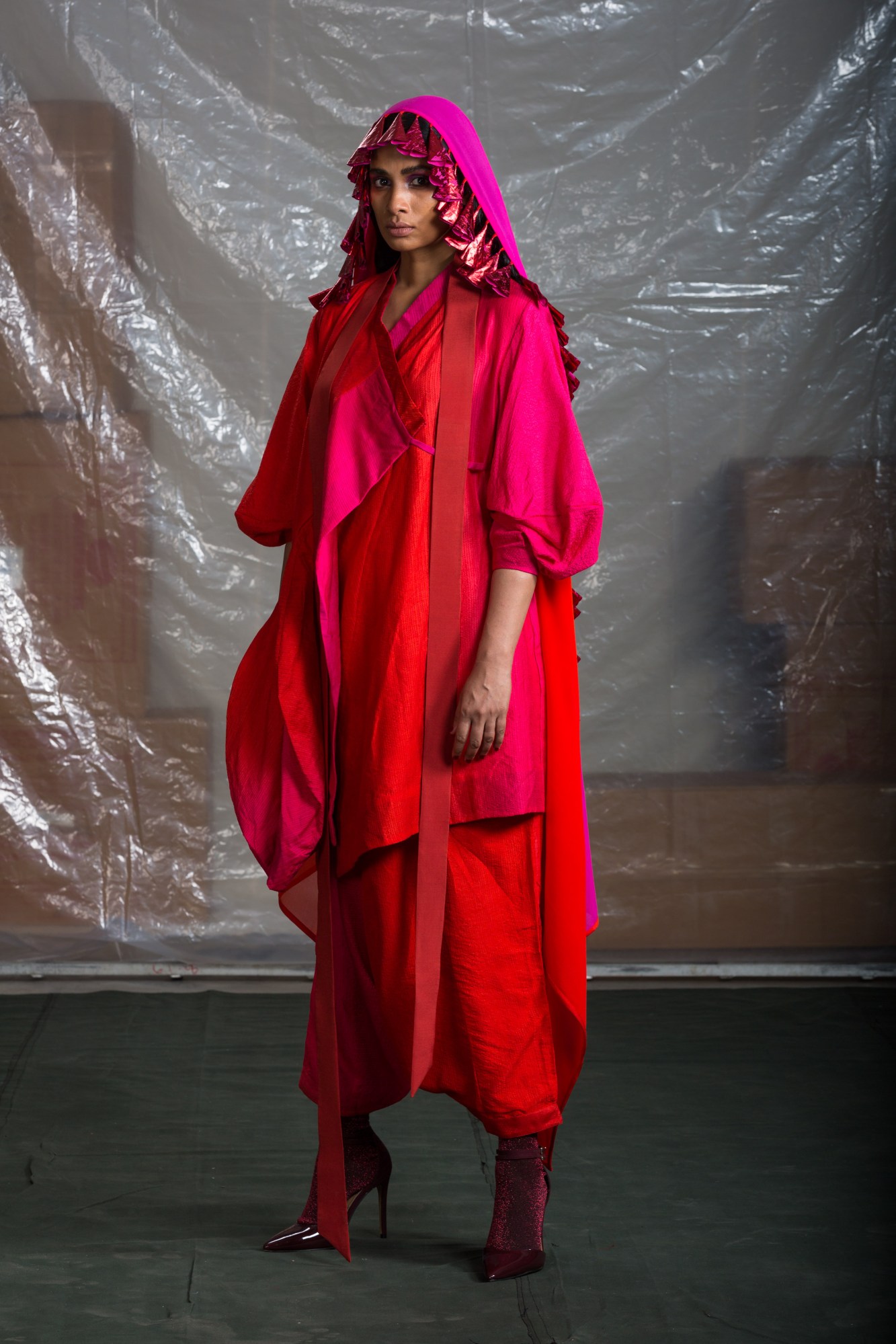When I was seven years old I travelled to Karachi, Pakistan with my mum to attend my uncle’s wedding. When the party was over, the women quickly adjusted their chadors or burkas before hailing a rickshaw to take them home. I clutched my mother’s chador and walked into the chaos of Karachi traffic. A few minutes later my hand was pushed away and I was lost in a sea of faceless women, they were all hidden and I desperately scanned the crowds for my mother’s physical signature. The experience of losing my mother in a sea of veiled women led me to a personal grudge against the chador and the burka. Later I realised the chador wasn’t for me to like or dislike, it was a sign of my mother’s romantic pursuit of cultural agency — a sentiment I found present in the work of designer Kallol Datta.
In 2015, Kallol presented a series of experimental hijabs, in Saudi Arabia and Kuwait, with pattern cutting techniques that included; 3D inserts, tassels, garbage-bags and foil print. His dramatic emphasis of the chador gave his garments a sculptural quality that crosses from runway to galleries, while illuminating cultural authorship of the veil.
Kallol was raised in the Middle East where fashion is at the apex of political boundaries, native wear and religious convention. Studying in India and later at Central Saint Martins and showing his anti-fit garments with sexless motifs on the runways of Lakme Fashion Week, Kallol has spent the last decade deconstructing and provoking through his practice, displaying garments as tools for political empowerment.
When you were young, living in the Middle-East, did you think about the fashion around you?
I remember seeing people in their long, lean, all enveloping silhouettes navigating spaces. Additionally, living in the region gave me access to its music, literature and cinema. And while the influences may not be literal or direct, my time there has worked its way into my craft.
What inspired your anti-fit style?
It stemmed from my personal wardrobe. Of wanting to shroud and cocoon the human form. There is a subversive pleasure in removing the layers as well. Referencing native wear clothing, their closures, their joinery… I produce clothes which are ‘anti-fit’ and at the same time conscious of the body. They aren’t mutually exclusive for me.
Your work explores gender and questions the boundaries and expectations of sexuality. Is there space for fashion as agency in the Middle East and India?
Native wear and religious clothing — they have formed guidelines as to what is acceptable and what is not. In these regions, ones’ personal agency becomes really important in establishing and encouraging opinions regarding their wardrobes. Governments and governing bodies need to let creators, artists and designers be creative agents.
In such a politically charged atmosphere the chador has become a suppressive icon, particularly through a western lens. We often neglect the beauty of the chador, did your mother wear a headscarf?
My family did not have anyone wear a headscarf, but I’ve spoken to so many women during my research who were the first in their family to wear a headscarf during their time in high school or university. It’s a feminist action when that occurs and should be seen as such. Ownership of a woman’s wardrobe should rest with her and only her. That ties in with my belief that women should decide on women’s rights. To see men legislating and deciding on the same is such a travesty.
You described the chador or hijab as a building block but they feel like a dominant feature of your work.
The hijab or chador have never been included on the fashion spectrum. For me they form part of my product range. We’ve spent so many decades ignoring a section of the population by not producing garments, it’s almost as if we’ve told them, “we see you but we choose to ignore you.” And I’ve never agreed with that train of thought.
Do you find that your work naturally gets pigeonholed as somewhat political because of your background?
It is political, I believe, because there is social commentary emanating from my work. The resonance with the art industry comes about due to the way I operate. There is an established ‘practice’…of pattern cutting, clothes making. Of being a lot more emotionally involved with the process because I approach it conceptually. The scope of my work shouldn’t extend to just bodies, but to overall design ideologies, aesthetics in contemporary clothes and my work should allow people to partake from it.



